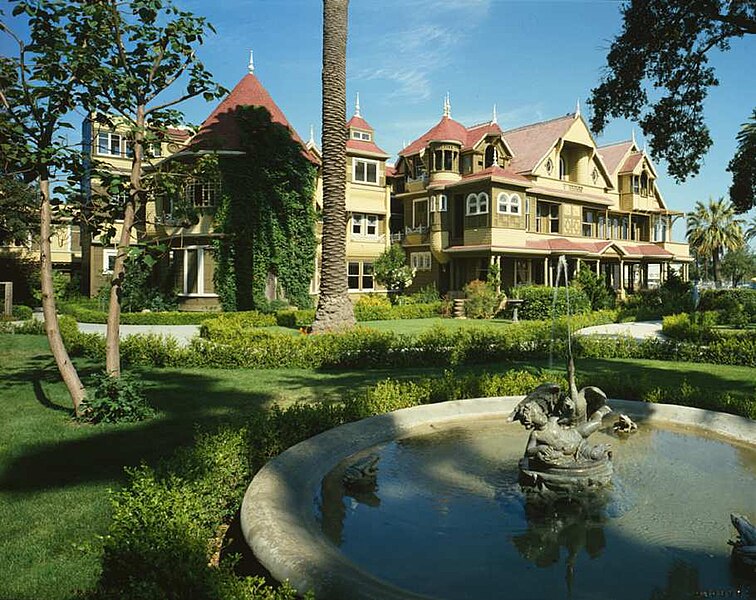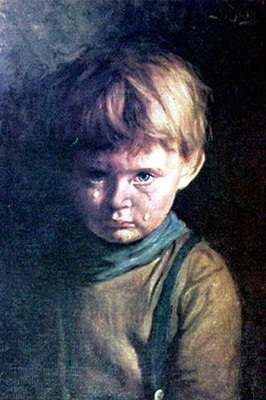"Ship found adrift on December 4, 1872 (some accounts say December 5), by the Dei Gratia, a bark sailing from New York to Gibraltar, and considered by many one of the most intriguing and enduring mysteries in the annals of maritime history.
When it was found, the Mary Celeste was sailing itself alone across the wide Atlantic. The ship was in first-class condition. Hull, masts, and sails were all sound. The cargo-barrels of alcohol were still lashed in place in the hold. There was plenty of food and water. When he examined the ship's log, the captain of the Dei Gratia found that the last entry was on November 24. That would have been 10 days earlier, when the Mary Celeste had been passing north of St. Mary's Island in the Azores — more than 400 miles west of where it was found. If it had been abandoned soon after that entry, the ship must have drifted unmanned and unsteered for a week and a half. Yet this could not have been. The Mary Celeste was found with its sails set to catch the wind coming over the starboard quarter: in other words, it was sailing on the starboard tack. The Dei Gratia had been following a similar course just behind. But throughout the 400 miles from the Azores, the Dei Gratia had been obligated to sail on the port tack. It seems impossible that the Mary Celeste could have reached the spot it did with its yards and sails set to starboard. Someone must have been working the ship for at least several days after the final log entry.
No one, from the 10 people that supposedly sailed aboard the Mary Celeste, including 7 crewmen and captain Benjamin Briggs' wife and daughter, was ever found.
The explanation that seemed most reasonable at the time was the official one put out by the British and American authorities. This suggested that the crew had got at the alcohol, murdered the captain and his family, and then somehow escaped to another vessel. But the story does not really stand up. There were no visible signs of a struggle on board, and if the crew had escaped, some of them would surely have turned up later.
The yawl boat — a small four-oared boat carried over the main hatch — was missing, suggesting that at least some of the missing people could have left the Mary Celeste in it.
Dozens of theories have been put forward since then, ranging from attacking monsters from the deep and aliens kidnapping to nature's wrath, piracy and mutiny. But no one has ever found any evidence or proof to confirm any of them. The only other evidence to what really happened may be the so called Fosdyk papers.
According to an article written by a schoolmaster named Howard Linford and published in 1913 (41 years after the Mary Celeste was found) in the Strand magazine of London, a well-educated and much-traveled employee of his named Abel Fosdyk, had left some papers and notes after his death explaining not only the fate of the crew but also the curious cut marks that were found in the bows of the Mary Celeste.
Fosdyk claimed that he had been a secret passenger on the ship's last voyage and the only survivor of the tragedy that overtook it. Being a close friend of the captain, Fosdyk convinced Briggs to give him secret passage because, for some undisclosed reason, he had to leave America in a hurry. During the voyage Briggs had the ship's carpenter build a special deck in the bow for his small daughter. It was the supporting struts for this deck that were slotted into the cuts in the bow planks.
One day, after a lengthy argument with the mate about how well a man could swim with his clothes on, Briggs leaped into the water and started swimming around the ship, as to prove his point. Couple of men followed while the rest of the crew watched from the deck. Suddenly, one of the sailors swimming around the bow gave a yell of agony. Everyone, including the captain's wife and child, crowded onto the newly built deck which promptly collapsed under their combined weight. They all fell into the sea, where all were devoured by the sharks that had attacked the first seaman.
Being the only survivor of the shark attacks because of his luck of falling on top of the shattered decking, Fosdyk clung to it as the Mary Celeste drifted away. He floated for days until he was washed up half dead on the northwest coast of Africa.
The Fosdyk papers tell a neat tale. But they offer no solution to the mystery of how the ship got to where it was found. And they are wrong on details that should not have escaped an educated man. Fosdyk says the Mary Celeste weighed 600 tons. In fact, the ship weighed a third of that. Fosdyk also says that the crewmen were English, when, in fact, they were mostly Dutch. And most of all, it seems highly improbable that anyone would go swimming around a ship that, according to the Dei Gratia evidence, must have been making several knots at the time. Bizarre as it is, no better explanation than Fosdyk's has so far emerged. And after more than 120 years, it is unlikely to do so. The enigma of the ship that sailed itself seems destined to puzzle us forever (Parts of this text are excerpts from Reader's Digest's "Strange Stories, Amazing Facts")."











